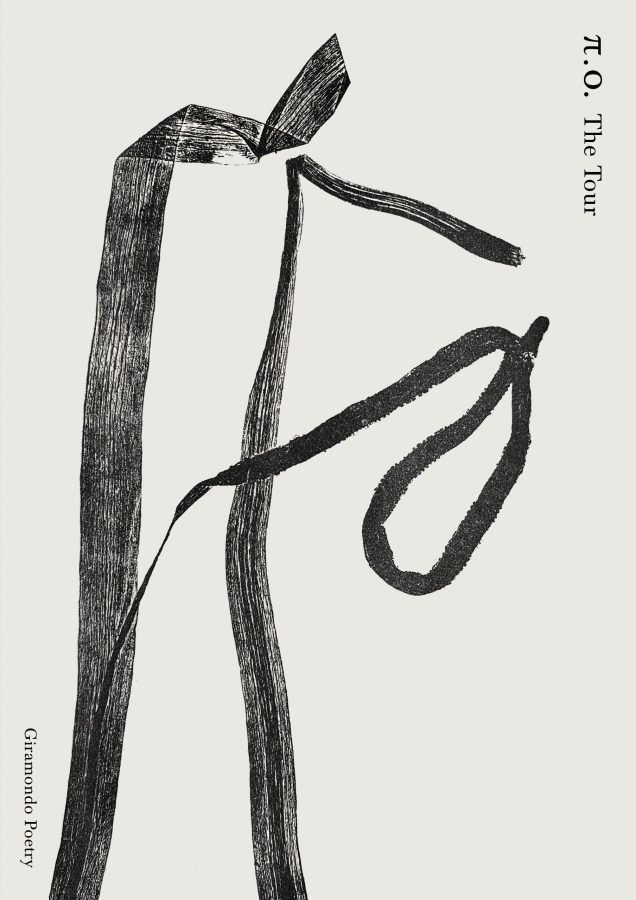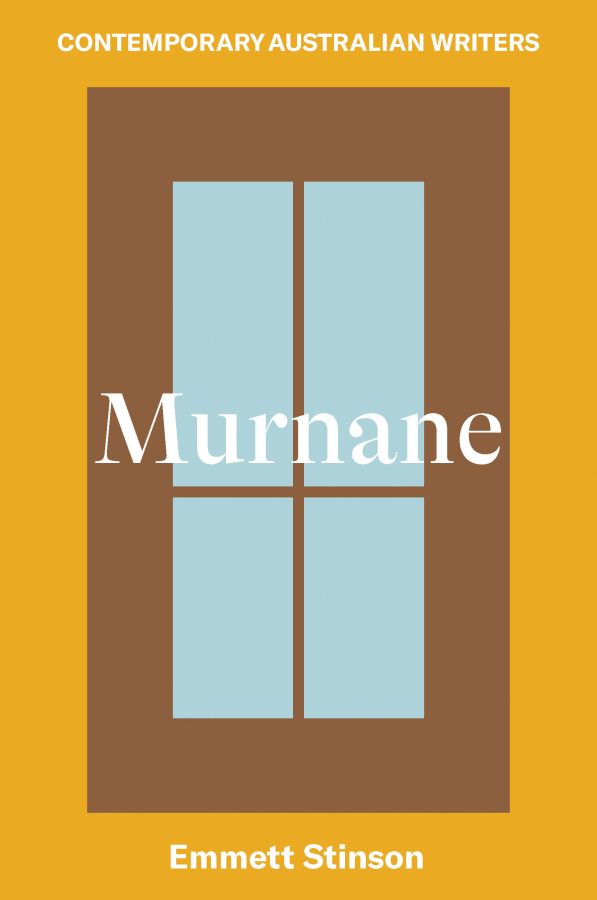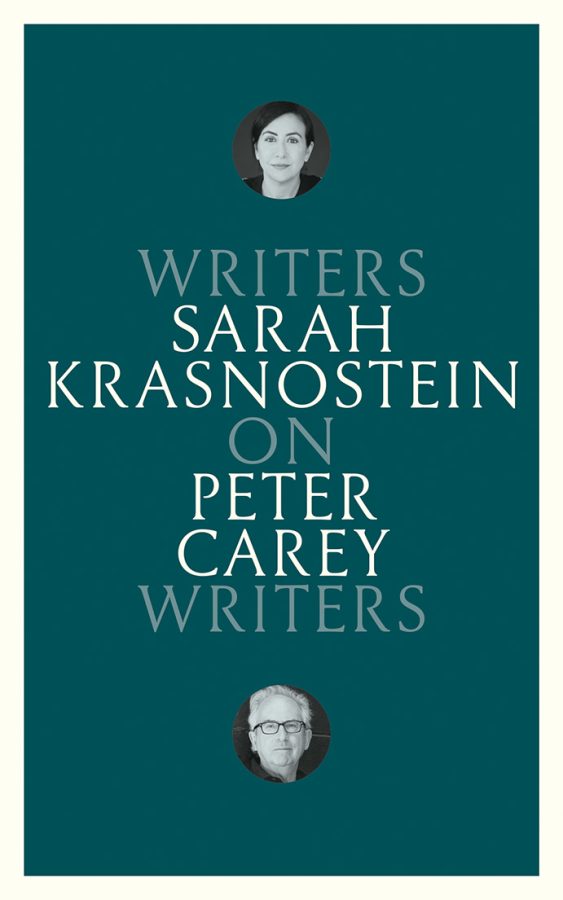Somewhere around 1988, Australian literature changed.
When the Macquarie PEN Anthology of Australian Literature was published at the end of winter in 2009, there was a one-day forum to discuss it at the State Library of New South Wales. It featured, among others, an assortment of full professors, including both of the country’s Professors of Australian Literature, Robert Dixon from Sydney and Philip Mead from Perth, and the anthology’s general editor, Nicholas Jose. One session featured all of the section editors, of whom I was one. In the course of a discussion about the Ozlit canon and what we thought had happened to it, we were asked when we had first registered that ‘the canon’ as we had all known it in the 1970s and 1980s had begun to break up, after the fashion of polar ice. My answer felt glib at the time even to me, but over three years later and after a great deal of thought, it would still be the same: ‘ASAL Parody Night, 1988.’
The Association for the Study of Australian Literature is the main professional association for scholars and teachers in the field. Known as ASAL, it has thrived ever since its first national conference in 1978. Ten years later, the conference took place in Sydney, held to be the most appropriate location in Australia’s Bicentennial year. But, successful as the conference was in most respects, I noticed that what had in the past been one of the annual informal highlights seemed to have lost some of its bite and shine.
In the course of the 1980s, the ASAL conference’s Parody Night had become a much-anticipated event. Given that ASAL had been formed in a spirit of embattled larrikin resistance to the mostly English (or Anglophile) professors who then dominated Australian university English departments, many of whom scorned the very notion of an Australian literature, it was perhaps inevitable that self-parody should emerge as one of the association’s favourite pastimes. The audience of Australian literature teachers, scholars, writers and students were united in their knowing amusement at parodies of poems, novels, short stories and plays that almost every one of us knew well. They were the staples of the Australian Literature canon, the landmarks in the field; every year, almost everyone in the audience would recognise the irreverent travesties of Voss (1957) or ‘Joe Wilson’s Mates’ or ‘South of My Days’ at once.
Of course some of this was self-determined; most of the people who offered parodies had the wit to pick subjects that would be well known to the audience. But there was also a pretty stable Australian literature canon, and everyone who was sufficiently interested in the subject to be at an ASAL conference was familiar with its contents. Memorable performances over the years included the surrealist mashup of Henry Lawson and Barbara Baynton, the parody of Tasmanian Gothic, and the feminised version of Les Murray’s ‘The Dream of Wearing Shorts Forever’. There was a mock-professorial paper on The Fortunes of Richard Mahony (1930), entitled ‘Falling Over in Europe and Australia’, and a brilliant and touching version of Barry Humphries’ Sandy Stone. Everyone understood why the parodies were funny (or not), for everyone recognised the characters, the events, the allusions, the misquotations and the archetypal meta-characters from academic life. One such, written by the undeniably canonical poet Gwen Harwood – already famous as a parodist long before ASAL was born – not only won that year’s competition but subsequently found its way into the Macquarie anthology: a sardonic homage to Adam Lindsay Gordon’s ‘The Sick Stockrider’ that addressed the current vogues and buzzwords in academic thought. One of its stanzas summed up the fears for the fate of traditional ‘Australian literature’ in a couple of lines, asking what has turned out to be a very good question:
When I lie beneath the pasture as an unexamined given,
Will my monoglossic nationalism die?
Parodies of Patrick White were popular but rarely won the competition; it was generally acknowledged that parodying White’s idiosyncratic style was too much like shooting fish in a barrel, a point that was to become important in the ongoing debates, disagreements and perceptions of crisis in the matter of Australian literature when in 2006 a journalist masquerading as a first-time author sent an unimportant and atypical chapter of one of White’s less well-known novels (with all the names changed) to a dozen literary agents and publishers and then expressed outrage that none of them had recognised it, offering her ‘gotcha’ as proof that Ozlit had gone, irredeemably, to the dogs.
But back in 1988, at Parody Night in Sydney, somehow the change was already in the air. ASAL members had begun to go their different ways and specialise within the field of Australian literature, and a tribal common knowledge could no longer be assumed; postgraduate students and junior academics coming up through the ranks had become more and more specialised in their work as the sheer volume of Australian writing increased exponentially while the ideologies and practices of cultural nationalism fell ever further out of favour. The essence of parody is recognition, but it could no longer be assumed on Parody Night that most of your audience would know what you were talking about.
Geordie Williamson begins his new book The Burning Library (2012) with the assertion that ‘For a long time there was no such thing as Australian literature. Then for a while, say the half-century from the publication in 1938 of Xavier Herbert’s Capricornia, there was. After which it once again faded from view.’ While not intended to be taken literally, this is still contentious on several fronts; but it is interesting to note what he identifies as the moment when ‘Australian Literature’, as an entity, began to be what he calls ‘atomised’. The half-century following 1938 takes us up, again, to 1988.
Why 1988? The Bicentennial celebrations and the lead-up to them had made a lot of people do some hard thinking about exactly what we talk about when we talk about Australian literature, and that was reflected in the way it had begun to be taught in universities. Nor was it just the academics; many of the writers themselves were suspicious of the historical triumphalism that the Bicentennial unavoidably represented. Kate Grenville’s 1988 novel Joan Makes History was a witty bit of feminist revisionism intended to destabilise traditional accounts of Australian history, while Patrick White, as David Marr reports in his biography, ‘decided that nothing of his would be performed or published in Australia in the bicentennial year of white settlement.’ In a 1985 letter to a friend, White had written ‘I hope I am dead before 1988 when we are supposed to celebrate our emptiness in a great shower of bullshit.’ Grenville sent him a copy of Joan Makes History, which he liked. ‘I was carried away,’ he wrote to her. ‘When I finished I even had a cry.’
Partly for these assorted reasons, partly because of the various manifestations of literary and cultural theory that were now standard fare in universities and the influence they were having on how we thought about our discipline, and partly because of the sheer volume of fiction, poetry, drama and, increasingly, literary nonfiction that was being produced, by 1990 Australian literature was less often taught in universities as a general, canonical survey course and more often as a set of specialised individual approaches in subjects called Australian Authorship or Australian Gothic or Australian Poetry, or with the focus on the identity politics of Aboriginal or migrant or women’s writing. And more and more, through the 1990s and into the twenty-first century, Australian literature was increasingly studied in international or global contexts, in fields whose names changed as the conceptual and ideological emphases shifted: commonwealth literature, postcolonial literature, transnational literature.
The victory of the Howard government in the 1996 Federal Election ushered in the so-called culture wars, in which a traditional nationalism informed the rhetoric of the Prime Minister, and the government’s values began to be reflected in cultural policy and funding. It was partly in reaction and resistance to this cultural-nationalist conservatism that the disintegration of the Ozlit canon speeded up; Nicholas Jose, giving the Barry Andrews Memorial Lecture at the 2008 ASAL conference, said:
I suspect that some of the resistance to Australian literature … comes with resistance to the political moment we have been living through. Australian literature as an institution risked being co-opted to a coercive agenda, leaving rupture as the solution: a clean break with a shameful past that was being recycled in the present as iconic of a ‘cohesive’ – narrow, racialised and triumphalist – Australian story.
Jose is one of several writers and scholars who have written at length about what has happened, or what they think has happened, to Australian literature in and out of the universities over the last few decades. David Brooks explores this recent past in his 2008 essay ‘Australian Literature: “Death”, or a Transformation?’, where his analysis, like Jose’s, is precise, well-informed, complex and cautiously optimistic. But both Tony Hassall’s 2011 essay in Quadrant, ‘Whatever happened to Australian literature in the universities?’ and Geordie Williamson’s introduction to The Burning Library (the most recent of these analyses) are at once angry and nostalgic, bemoaning the alleged loss of Australian ‘classics’ and the alleged disappearance of Australian literature from university courses, and laying the blame chiefly on the trendiness of cultural theory. Anyone who has taught in the humanities in a university knows that the trendiness of cultural theory – as distinct from cultural theory itself – is indeed responsible for a great deal of academic silliness, but to blame it for the alleged demise of Australian literature is to ignore the many other forces – usually more powerful, and often material – that were and are in play. Jose, in his 2009 General Introduction to the Macquarie anthology, sums these forces up as
a combination of changing intellectual approaches in the academy, including resistance to nationalist constructions of literature; shorter-term, market-driven publishing arrangements in an increasingly competitive and globalised media environment; reduced responsibility for cultural heritage, especially literature, in public policy; and the changing habits of new generations of consumers.
This is the background against which a major campaign was launched earlier this year by Text Publishing: the production of an ever-growing series of Australian ‘classics’, cheaply priced, sturdily produced, and given a strong family resemblance by W. H. Chong’s sunny yellow cover designs. More than one such Australian publishing venture in the past – when assorted out-of-print texts from bygone eras were reprinted in bargain-priced editions by venturesome publishers – was somewhat dampened by the fact that the cheaply produced books came, literally and immediately, unstuck; the only ones that didn’t fall apart before they had had a chance to go out of print were those that had remained unopened. But this series is showing no such signs of physical fragility; my Text copy of Elizabeth Harrower’s The Watch Tower (1966) has already taken a severe beating but remains intact.
The Macquarie anthology had been the last big, organised intervention into the provision of easily available Australian literature texts for easy access to large numbers of people, including for teaching purposes. The Text series is a very different beast, but what the two ventures have in common, apart from making life easier for those who wish to teach Australian literature, is that both, unavoidably, are canonising projects of a kind, making implied statements regarding the relative importance of books and writers in the field simply by virtue of what they do and do not include. Every time I look at the Text website, new books have been added to the series and their list of ‘classics’ looks bigger and less eccentric. As at early December, the number of books on the list stands at 46, and it includes some texts whose status as genuine, rolled-gold ‘Australian classics’ nobody would ever question: Barbara Baynton’s Bush Studies (1902), Martin Boyd’s The Cardboard Crown (1952), Henry Handel Richardson’s The Fortunes of Richard Mahony, Miles Franklin’s My Brilliant Career (1901). With almost 50 books now in the series and more to come in 2013, one would think the collection might now bear inspection as a sketch or sampler of Australian literature, with some considerations of the individual titles and whether they add up to a reasonably representative overview.
But that would assume that publisher Michael Heyward had a free choice of texts, and of course that is not the case; the choice of titles is at least as dependent on real-world material considerations, such as whether the publishing rights are available and affordable, as on more lofty considerations of canon-building and taste-making. It stands to reason that some of the most popular and well-known Australian books are precisely those to which you can’t acquire the rights, so obviously there will be not so much gaps as yawning chasms, best exemplified in this case by the fact that there is nothing by Christina Stead, and the only Patrick White novel in the series so far is his long-suppressed debut effort Happy Valley (1939), first published when White was 27. The irony of this situation is that the series, conceived out of traditional notions of ‘classics’, is in fact presenting an endearingly eccentric, lop-sided, join-the-dots picture of Australian literary history, a picture arising out of material conditions and considerations that have nothing to do with literary value.
Even bearing these things in mind, though, you might still usefully ask why this series so far includes so few short stories, almost no poetry, and no drama at all; the answer would almost certainly be ‘because poetry and drama don’t sell’, which makes excellent business sense but hardly upholds the lofty ideals expressed in the publicity campaign about the revivification of Australian literature and the restoration of lost ‘treasures’. It is also legitimate to ask why four books by New Zealanders have found their way into the mix, and the word ‘Australian’ – well to the fore in the original promotional material – has been quietly dropped from the name of the series, especially as that change removes the sales platform’s central plank: its appeal to nationalist sentiment.
But to quibble and fret interminably about individual inclusions and exclusions would be as subjective and as superficial an approach as such criticism usually is, especially in an age where canon-making is justifiably looked upon with suspicion. ‘It is surely vital,’ argues Australian poet John Kinsella ‘to think in terms of a national literature, historically or contemporary, with flexibility and an openness to change and reassessment.’ Kinsella’s piece on the Text Classics series appeared in the Guardian last year, unequivocally entitled ‘An Australian canon will only damage Australian literature’.
The rhetoric of the publicity campaign for the Classics series is grounded in blame and indignation about the alleged ‘neglect’ of Australian literature by publishers, editors, journalists and, most of all, academics. Heyward announced the imminent publication of the first lot of Text Classics in an article for the Age entitled ‘Classics going to waste’, where he wrote: ‘Our universities have failed for more than a century to create any kind of enduring tradition for the teaching of Australian literature. We are so familiar with this failure we hardly notice.’ Geordie Williamson in The Burning Library – which was commissioned by Heyward, its publication timed to coincide with the Classics series – expresses similar indignation.
It’s hard not to believe that at least some of this sudden outburst of outrage is just part of the promotional strategy. Making people think that they have been deprived of something and then whipping up their indignation about it is a time-honoured marketing tool and a well-known way of creating a demand where no demand existed before, and anyone who has ever taught Australian literature in a university will confirm that the demand for it has rarely been more than modest, which in turn increases the difficulty of establishing new subjects and courses. Such a person might also point out that earlier editions of these and many other Australian books can be easily found in libraries and second-hand bookshops by anyone who is interested in reading them. But if you are going to position yourselves as white knights riding to the rescue of the distressed damsel that is Ozlit, you need to cast someone as the dragon, and – in Australia at least – what better than ‘our universities’ for that?
Not that the universities don’t have a lot to answer for, but those academics who began the tradition of teaching Australian literature in universities in the 1940s, those who kept it up over the succeeding decades, and those who are carrying it on in any form they can today – and there are still many of them, contrary to the assertions of Heyward and Williamson – are not to be blamed for not trying. (Accounts of Australian literature in the universities that claim it began in Sydney with G.A. Wilkes and in Melbourne with Vincent Buckley in the 1960s habitually ignore the pioneering work by Hobart’s Joyce Eyre in the 1940s and, in the 1950s, Adelaide’s Brian Elliott and Canberra’s Tom Inglis Moore.) Among other things, Heyward seems to be identifying as a specific neglect of Australian literature what is in fact a dire situation for the Humanities all over the country, with staff numbers cut in half but still expected to offer the same range of subjects and courses. As I write this paragraph, another headline has just popped up online: ‘Cut to Arts programs at the University of Western Sydney’. Professor Elizabeth Webby, yet again identifying 1988 as a turning point, sounded an ominous prophetic note in 1991 in her inaugural lecture as the third Professor of Australian Literature at the University of Sydney:
In this last period, 1938-1988, we have seen an increasing preoccupation with questions of Australian identity and the construction of it … This period has also seen the establishment of courses in, and centres of, Australian literature and Australian studies, not only in this University, but throughout the world. This period ended with the premature celebration of the bicentenary of Australia – something which will not, of course, actually occur until the year 2101 … By then, another half-century will almost have passed since 1988, and conceptions of what is literature, what is Australian, will have changed yet again, [but] I don’t imagine the issues will really have changed all that much. It will still come down to deciding which texts get taught and which don’t, to the battle between keeping up with the new and preserving or rediscovering the old, to balancing the desire to foster the local while remaining aware of the international. There have been and there are, as I have tried to show, a range of answers to ‘why Australian literature?’ and ‘what Australian literature?’ They, or questions like them, will keep being asked, as long as we have universities, or, at least, universities with strong Faculties of Arts.
None of this has any bearing on the intrinsic worth of the Text Classics enterprise, or on the great value of restoring these books to easy public view. If the series gets out to those general readers for whom I think it was intended, these matters of literary and cultural politics are unlikely to trouble them. For these people, the series is simply a wonderful gift, and it holds pleasant surprises even for people who already know the field well. For me there have been several of these already: it has introduced me to All the Green Year (1965) by historian Don Charlwood, whose bittersweet memoir of youth had inexplicably passed me by. One of my favourite Australian novels, and one of the most inexplicably underrated, is here: The Commandant (1975) by Jessica Anderson, a delicately understated but searing account of a notorious historical figure and his last days. New copies of Elizabeth Harrower’s The Long Prospect (1958) and The Watch Tower sit on the shelf where the old ones lived until they fell to pieces, and some very old friends from my parents’ 1960s bookshelves have reappeared as Text Classics: The Songs of a Sentimental Bloke (1915), They’re a Weird Mob (1957), The Fringe Dwellers (1961), Wake In Fright (1961).
For me, however, the greatest value of this series lies not so much in its ‘neglected gems and lost treasures’ narrative as in its potential as an imaginative, polyphonic introduction to the broad canvas of Australian history, something that general readers, students, new citizens and international visitors alike might value. A careful selection of books from the series, ordered chronologically according to the time in which they are set, would cover all the usual suspects: first contact, white settlement, convicts, gold, explorers, bushrangers and, indeed, the bush. There are books that explore facets of both World Wars, and of the Great Depression; books that reflect the social conditions and aspirations of the 1950s and 1960s; books that reflect the country’s race-relations history. There are books that are unintentionally and incidentally revealing of changing attitudes, like John O’Grady’s They’re a Weird Mob or Strine (1965-9) by Afferbeck Lauder – a pseudonym older readers might recognise as a phonetic rendition of the phrase ‘alphabetical order’ in a broad Australian accent, something that might make a contemporary reader reflect on the postcolonial politics of accent-mocking and the cultural values of the 1960s. There are books that explore the internal dynamics and cruelties of convict settlements, like The Commandant and Thomas Keneally’s Bring Larks and Heroes (1967), and books that tease out the psychology of emigration, colonisation and nationality, like The Fortunes of Richard Mahony and The Cardboard Crown. If one of the functions of literature is to reveal a country to itself, then this series, with its wide panoramic sweep, has made a major contribution to the process.
Works Cited
David Brooks, ‘Australian literature: “Death” or a transformation?’ (2008).
Tony Hassall, ‘Whatever Happened to Australian Literature in the Universities?’ Quadrant, (October 2011).
Michael Heyward, ‘Classics Going to Waste’, The Age, (22 Jan 2012).
Nicholas Jose, ‘Australia Inside and Out’ (Barry Andrews Memorial Lecture 2008), JASAL Special Issue: Australian Literature in a Global World, (2009).
Nicholas Jose, ed. The Macquarie PEN Anthology of Australian Literature, (Allen & Unwin, 2009).
John Kinsella, ‘An Australian Canon Will Only Damage Australian Literature’, The Guardian, (8 March 2012).
David Marr, Patrick White: A Life, (Random Century Australia, 1991).
David Marr, ed. Patrick White: Letters, (Random House Australia, 1994).
Elizabeth Webby, ‘Why Australian literature?’ University of Sydney (September 1991).
Geordie Williamson, The Burning Library, (Text Publishing, 2012).





